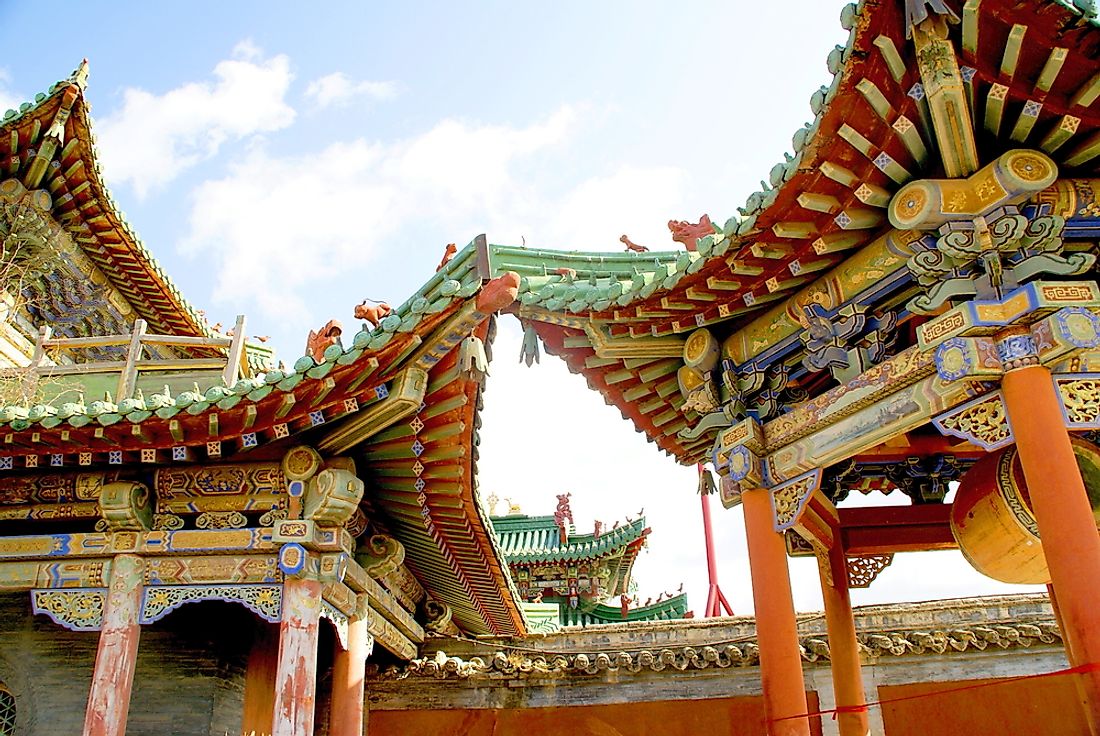What Religions Are Practiced In Mongolia?

The sovereign state of Mongolia is located in East Asia. It has an area of 1,566,000 square km. The estimated population of Mongolia was 3,081,677 in 2016.
Buddhism dominates the religious scene in Mongolia. Buddhists account for 53% of the population of the country. 38.6% of the population is not affiliated with any religion. Muslims and Christians represent 3% and 2.1% of the total population, respectively. 2.9% of the people of Mongolia adhere to the Mongol shamanic tradition. Followers of other religions make up 0.4% of the population of the country. The above figures are provided by the 2010 national census of Mongolia.
A Brief History Of Religion In Mongolia
Historically, Mongolian Buddhism and Shamanism have been the two dominant religions in Mongolia with most indigenous Mongols adhering to these religions. During the peak of the Mongol Empire’s rule in the region, foreign invasions by the empire exposed the Mongols to Islam and Christianity. However, none of these religions managed to have a significant impact on the religious scene in the region. Religious practices in Mongolia were greatly suppressed during the socialist period in the country between 1924 and 1992. Later, however, with the emergence of a parliamentary republic in the 1990’s, religious practices were revived in Mongolia.
The Largest Religion In Mongolia
The Buddhism practiced in Mongolia is heavily influenced by Tibetan Buddhism. The religion became popular in the country when the Mongolian emperors of the Yuan dynasty converted to this religion in the 12th and 13th centuries. After the fall of this dynasty, Buddhism lost its importance in the region till it was revived once more in the 16th and 17th centuries.
Mongolian Shamanism
The Mongolian Shamanism refers to the indigenous folk religion of the people of Mongolia. It is the oldest religion practiced in the country. The polytheistic religion is associated with the worship of a number of gods or tngri with one of them, the supreme deity, reigning above all others. Genghis Khan is highly revered by the followers of this religion who worship him as one of the embodiments of the supreme God. The Mausoleum of Genghis Khan serves as an important center of worship for believers of Mongolian Shamanism. Over the years, the religion has mingled with Buddhism to result in Yellow shamanism. The type of shamanism not influenced by Buddhism is known as black shamanism.
Other Religions In Mongolia
Christianity became popular in the country quite late in its long history. It was only after the end of the Communist rule in Mongolia in 1990 that the number of Christians in the country started growing. While the Christian population of Mongolia was just 4 in 1989, it became 40,000 in 2008. A large section of the country’s Christian community lives in and around the capital city of Ulaanbaatar. Muslims in Mongolia are mainly ethnic Kazakhs distributed in different parts of the country. Other religions have a small presence in Mongolia.
Freedom Of Religion In Mongolia
The Constitution of the country provides for freedom of religion. The government generally respects this right of the people. However, religious organizations must register with the government to operate and the registration process is often cumbersome and associated with bureaucratic obstacles. Although a few reports of discrimination on the basis of religion exist, the Mongolian society is usually tolerant towards religious differences.
Religious Beliefs of Mongolia
| Rank | Religion | Percentage of Population |
|---|---|---|
| 1 | Buddhism | 53 |
| 2 | Non-religious | 38.6 |
| 3 | Islam | 3 |
| 4 | Mongolian Shamanism | 2.9 |
| 5 | Christianity | 2.1 |











